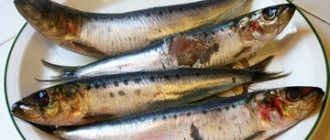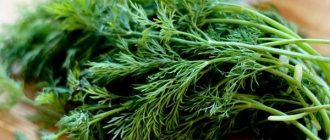The fur seal is in no way related to cats and is a pinniped mammal, a member of the eared seal family. Its closest relative is the sea lion. In nature, there are 7-9 species of fur seals, which are combined into two genera - northern (one species) and southern fur seals (other species).
Description of fur seals
The fur seal has the typical appearance of most pinnipeds.
The body is elongated with a short neck, small head, and flattened limbs - flippers. The tail is short and almost invisible. The fur seal is not as fat as a seal, but moves on the ground using all four limbs. The fur seal is also distinguished from the seal by the presence of auricles, which is why it is sometimes called the long-eared seal. — Advertising —
The eyes are dark, large, moist. Vision is poor, myopia is typical, hearing and sense of smell are much better developed. Fur seals also have the ability to echolocate. The fur is short, very thick and valuable, brown or almost black. The newborn cub is always jet black, and after the first moult it turns gray. Male and female fur seals are distinguished by their size: males are 4-5 times larger. While their weight reaches 100-250 kg, the weight of females ranges from 25-40 kg.
Is freshwater fish safe for cats?
Most cat owners agree that it is unsafe to give cats fish caught in freshwater sources without prior heat treatment. Research has revealed that 95% of river fish are infected with helminths. The following types of freshwater fish contain the most parasites that lead to diseases such as opistochoriasis :
- Pike
- Roach
- crucian carp
- Carp
- Carp
- Bream
In order to be sure that the infected fish will not harm your pet, it is necessary to subject the product to one of the temperature options - either freeze it at 25 degrees negative temperature or boil it with the obligatory boiling stage.
If a method of preventing helminthiasis is used in the form of freezing the product, then storing the semi-finished product should take at least two weeks in the freezer. An effective way to prevent the introduction of worms into a cat's body is to thoroughly boil food. When boiled in a liquid that reaches 100 degrees, all helminths die. After the water boils, the fish should be cooked for at least 15 - 20 minutes. Before starting the cooking process, large fish should be cut into small portions.
Distribution of fur seals
The fur seal chooses to live on the coasts of seas and oceans; it is not found in inland waters. Since the species is more mobile than the seal, it can occupy both flat and steep rocky shores. Various species of fur seals are distributed throughout the entire Pacific Ocean from Alaska and Kamchatka to Australia and the subantarctic islands. A species such as the Cape fur seal lives on the coast of the Namib Desert in southern Africa.
Common types of fur seals
Northern fur seal (Far Eastern) (Callorhinus ursinus)
“Classic” representative of fur seals. Males reach 2.2 m in length and weigh up to 320 kg. Females, weighing 70 kg, have a body length of about 1.5 m. Distributed in the north of the Pacific Ocean to the south of Japan and California.
South American fur seal (Arctocephalus australis)
— Advertising —
The body length of males is up to 1.9 m, weight is about 200 kg. Females are 1.40 m long and weigh 50 kg. The fur is light brown in females and black-gray with a mane in males. The species includes two subspecies: Falkland fur seals (Arctocephalus australis australis), which live on the Falkland Islands, and the main subspecies Arctocephalus australis gracilis, an inhabitant of the coast of South America. The population is currently stable and not in danger of extinction.
New Zealand fur seal (Arctocephalus forsteri)
Painted grey-brown. Males are distinguished by a black mane and body length up to 2.5 m, weight 180 kg. Females reach 1.5 m in length and weigh up to 70 kg. The species is found on the coasts of New Zealand, southern and western Australia, as well as on some subantarctic islands.
Galapagos fur seal (Arctocephalus galapagoensis)
The smallest type. The body length of males is 1.5 m, weight up to 64 kg. The body length of females is 1.2 m, weight does not exceed 28 kg. The wool is gray-brown. This species is endemic to the Galapagos Islands, where it lives its entire life without migrating.
Kerguelen fur seal (Arctocephalus gazella)
Males reach a length of 1.9 m, females – 1.3 m. Weight is 150 and 50 kg, respectively. The fur is gray-brown. The male is distinguished by the presence of a black mane, with gray or white hairs. Habitat: Antarctica (South Georgia and South Sandwich, Prince Edward, South Shetland, South Orkney, Bouvet, Kerguelen, Heard and MacDonald, Crozet and Macquarie islands).
Cape fur seal (Arctocephalus pusillus)
The body length of males is 2.5 m, females – 1.8 m. This species is the largest. The subspecies Arctocephalus pusillus pusillus is found on the Atlantic coasts of South Africa and Namibia and can migrate far to the north. The second subspecies, Arctocephalus pusillus doriferus, lives on small islands in Bass Strait.
Guadalupe fur seal (Arctocephalus townsendi)
Males are larger than females. The species is dark brown or almost black in color, with a yellowish back of the neck. The mating season occurs in the east of Guadalupe Island, which is 200 km west of California.
Subtropical fur seal (Arctocephalus tropicalis)
Medium size type. The body length of males is up to 2 m, weight is about 160 kg, females are up to 1.4 m in length, weighing about 50 kg. The chest and muzzle are creamy orange, the belly is brownish. The back of males is dark gray or black, females are light gray. The habitat is wide and partially overlaps with the Kerguelen fur seal. Large colonies live on the Gough Islands in the South Atlantic and Amsterdam Islands in the southern Indian Ocean.
Fur seal behavior
Fur seals have a gregarious nature; in rookeries there are several thousand individuals that live in close quarters.
Animals rest on the shore and go out to sea in search of food. The duration of the hunt is usually 2-3 days, so the fur seal knows how to sleep in the water. All species are characterized by migration. They are usually oriented north-south within the range. The longest movements are typical for northern fur seals: from Kamchatka to California. Migrations are due to the fact that during the breeding season fur seals choose colder waters rich in food.
At rookeries, fur seals behave differently: females are usually calm and peaceful, but males show aggression, often biting small females and cubs. In addition, these animals are very loud, and their rookeries have a high noise level. Each fur seal hunts alone; joint actions are not typical for this species. Navy seals are distinguished by a high level of intelligence; they are easy to teach even complex commands.
Nutritional value: application
The nutritional value of the sea cat is practically zero. Nevertheless, in many countries around the world it is caught in large quantities and used to prepare delicacies in elite five-star restaurants and other exotic cuisine establishments. The liver of fish contains more than 63 percent of nutritious fat, enriched with very valuable vitamin D.
If this subspecies of stingray attacks a person, the resulting injuries can be very painful. The fact is that the thorns contain certain toxins that cause terrible pain.
Among the common types are:
- Red Stingray. The length of an adult individual rarely exceeds 1 meter. The habitat is considered to be the warm regions of Southern Primorye.
- Giant stingray. It lives in Peter the Great Bay and grows up to 2.3 meters in length.
- Matsubara's stingray is one of the very rare species of stingrays that are found in the same Peter the Great Bay.
The use of the sea cat is represented by the manufacture of weapons from sharp fish spines. For many years, local island aborigines used them as effective spear points, which later served as tools for catching fish.
Fish oil is also squeezed out of caught stingrays. But an animal can pose a great danger to humans. When aggressive, it can cause fatal wounds, followed by a long and painful death due to bleeding.
In many cases, the sea cat attacks people after they step on its body buried in the sand. The toxic venom of the stingray can cause:
- spasmodic pain;
- muscle paralysis;
- infectious diseases;
- blood poisoning;
- fatal outcome - death of the victim.
Reproduction of fur seals
The mating season occurs in spring.
Only for the northern fur seal, spring begins in May-June, and for the southern fur seal - in November. At this time, males swim to summer rookeries and occupy each of their own areas: large individuals in the middle, small and weak ones at the edges. Males roar loudly, marking the boundary of their territory. Fur seals often fight and bite each other. Females move freely around the rookery, but males watch them and try not to let them out of their territory. A kind of “harem” is created around each male: from 2-3 to 20 females. The duration of pregnancy is 1 year, childbirth occurs during the rut. The female gives birth in a harem, and initially guards the baby, weighing about 2 kg. She then leaves him as she goes to get food. The babies remaining on the shore are threatened by the males, who can easily crush them. Young animals in the water become prey for sharks and killer whales. For these reasons, mortality among young animals is quite high.
Lifestyle
Fur seals spend most of their time at sea. They can stay in the water for a long time and even sleep on its surface. Some species make long migrations, returning to the shore only during the breeding season.
While at sea, animals actively feed. This period of life is called the feeding period. They hunt alone, gaining weight before the reproductive period. Fur seals are excellent swimmers. Underwater they can accelerate to 30 km/h and dive to a depth of 200 m.
They hunt fish and various cephalopods. They have little subcutaneous fat, which allows them to dive easily and have excellent control of their body under water, and their fur helps retain heat, which holds air bubbles well inside, enveloping the animal with a kind of “pillow.”
Fur seal. Photos and videos of fur seals
Natural enemies of fur seals
The natural enemies of fur seals are sharks and killer whales, which attack young animals. Hunting, which people still do on an industrial scale, also causes damage to the population. They hunt mainly cubs due to the high quality of their fur; meat and fat are also used. Because of this fishing, certain subspecies of fur seal are on the verge of extinction.
Why are fish dishes contraindicated for neutered pets?
In castrated animals, which, unlike sterilized ones, have lost their ovaries or testes, the hormonal system and metabolism change. After the procedure to deprive them of reproductive function, they automatically fall into the risk group for kidney and endocrine diseases. The components found in fish negatively affect the functioning of the relevant organs, so eating fish by cats after castration is not recommended.
The absorption of elements contained in these products is inhibited, and a tendency to accumulate them develops. Accumulating in the body of castrated animals, they lead to the appearance of stones in the organs of the urinary system. Despite the enormous health benefits for cats, fish dishes should be offered to them extremely rarely.
Castration imposes additional restrictions on the nutrition of representatives of this family, especially on those foods that can provoke the formation of stones in the organs of the urinary system. This point should be taken into account when deciding to get a kitten and accustoming it to natural food.
Interesting facts about fur seals:
The northern fur seal rookery on the Commander Islands was first described by naturalist Georg Steller in the mid-18th century. After the description of the rich rookeries, hunters for “fur gold” flocked to the islands and uncontrolled fishing began, which brought the animal to the brink of extinction. In the 20th century, a convention was adopted for the conservation of the northern fur seal. Fishing is still carried out, but not in such volumes as before, and the population is gradually recovering.
Fish in the diet of baleens: benefits and harms
Despite the growing mistrust of fish, it has many beneficial properties. Among the advantages of using this product are:
- Easy to digest
. Fish protein is 7-8% easier to digest than meat protein. This eases the load on the stomach and intestines.
- Vitaminized composition
. The majority are vitamins A, B1, B2, D and E, as well as calcium, zinc, selenium, phosphorus, iron, taurine and magnesium.
- Rich in omega-3 and -6 fatty acids
. The quantity depends on the variety. The largest percentage (9-25%) is typical for marine varieties. Fatty acids ensure the functionality of the kidneys and heart, prevent inflammatory processes in the joints and improve the condition of the coat and skin.
- Attractive aroma and taste
. By adding fish dishes, you can mask the presence of the tablet, and using broth, you can increase interest in regular water if the animal drinks less than its norm.
Thus, the product is suitable as a reward and variety for the menu. But it is not worth introducing it on an ongoing basis and as the only source of protein. The number of disadvantages significantly exceeds the listed advantages.
Uncontrolled use may cause the following problems:
- Excess phosphorus and salts
. It provokes the development of urolithiasis, kidney failure and interferes with the absorption of calcium and vitamin D.
- Avitaminosis
. Despite the variety of vitamins included in the composition, the content of vitamin E required by pregnant animals is extremely low. The same applies to vitamin K, which is responsible for blood clotting. Another problem is special enzymes (thiaminase and trimethylamine oxide). They destroy vitamin B1 and iron.
- Hyperthyroidism
. Thyroid dysfunction is caused by excess iodine.
- Injuries
. If swallowed, sharp bones can damage not only the oral cavity, but also the gastrointestinal tract. In particularly severe cases, the victim will have to undergo surgery.
- Parasitoses
. The highest content of helminths is typical for river varieties.
- Toxin poisoning
. In addition to useful substances, the composition includes a large number of toxic substances: pesticides, lead, mercury. Their regular use can lead to cancer.
- Allergy
. Unlike dogs, mustachioed pets are more susceptible not to chicken protein, but to fish protein.
When including fish products in a cat's menu, special care must be taken. Otherwise, your cat may suffer from these complications.











